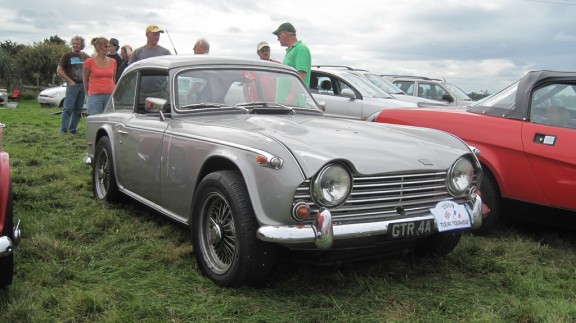By Nigel Matthews
If you think the Dove looks like the Triumph equivalent of an MGB GT you would be absolutely correct, except it predated the latter by two years.
The Dove name derived from L.F. Dove and Co. of Wimbledon, a large Triumph dealership in London whose owner came up with the idea of building the car.
The exact number built is a mystery. But it is widely believed that Dove commissioned coachbuilder Thomas Harrington of West Sussex — the same people who built the Harrington Alpines — to build 100 examples.
Starting with a Triumph TR4, the craftsmen at Harrington removed the trunk lid, rear bulkhead, tonneau panel and gas tank. With these panels removed, Harrington fitted a full-length roof, rear hatch door, and end panel made out of fibreglass.
The fuel tank was moved into the spare wheel well with a filler neck and cap located in the end panel to the left of the licence plate.
The high roofline and relocated rear bulkhead and fuel tank made room for two rear seats that could seat two small children in relative comfort. With room for a weekend’s worth of luggage in a compartment below the rear hatch lid, the Dove had the makings of a practical family sports car.
The Triumph Italia, built in Italy by Vignale, is the only other Triumph from the ’60s that comes to mind as being this rare. Triumph Italia was built as a left-hand drive car and the chance of an Italia sighting in North America would be that much greater than spotting a right-hand drive Dove.
I am aware of only a couple of Doves in the U.S. and perhaps a maximum of 10 in Europe. Triumph thought that the stylish Italia posed a great threat to their sales market, so the solution was to stop the supply of rolling chassis to Vignale. History often has a habit of repeating itself. The Rootes Group (Sunbeam Alpine), which had a long relationship with Harrington, forced them to stop making the Triumph Dove.


